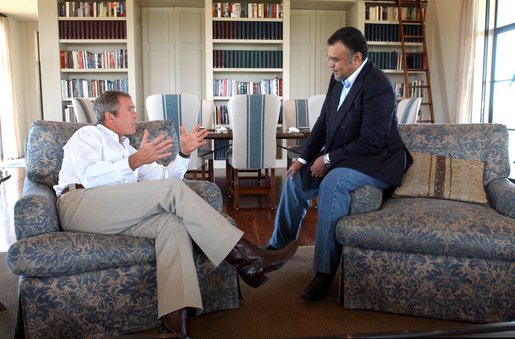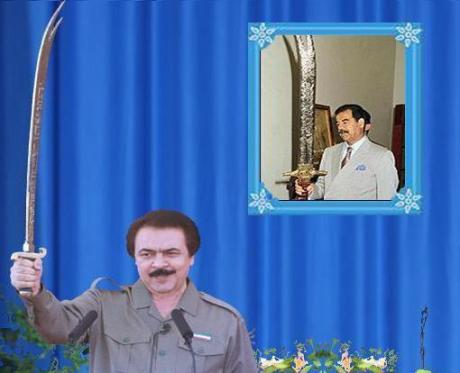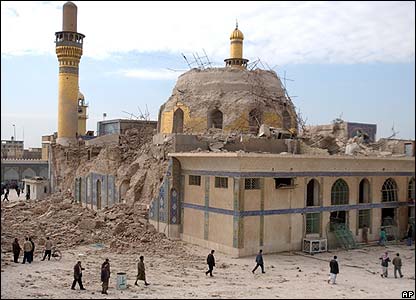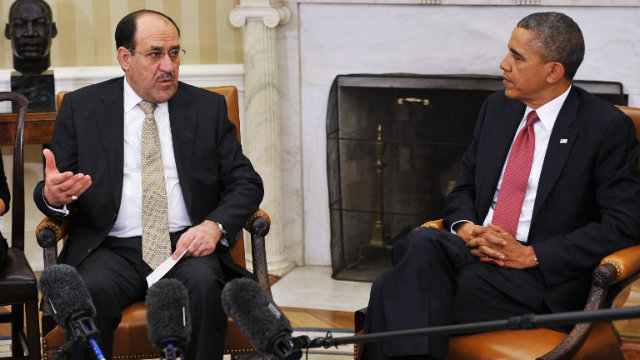Global Research, June 22, 2014
“A nation that is afraid to let its people judge the truth and falsehood in an open market is a nation that is afraid of its people.”John F. Kennedy
 Terrorism*, directly or sponsored, has long been America’s weapon of mass destruction – its weapon of choice. As a strategy, it outdates ‘human rights’ and ‘democracy promotion’ and has proven itself to be far more effective by creating mayhem and fear, removing resistance to intervention. The events of 9/11 justified this age-old tactic. Although the tentacles of America’s terror tactic reach back far and spread wide, this article seeks to address the presence of ISIL (or ISIS).
Terrorism*, directly or sponsored, has long been America’s weapon of mass destruction – its weapon of choice. As a strategy, it outdates ‘human rights’ and ‘democracy promotion’ and has proven itself to be far more effective by creating mayhem and fear, removing resistance to intervention. The events of 9/11 justified this age-old tactic. Although the tentacles of America’s terror tactic reach back far and spread wide, this article seeks to address the presence of ISIL (or ISIS).As of writing this essay, it has become public knowledge that the group referred to as ISIS was trained by the United States to topple Syria’s President Assad. The purpose of this article is to give a comprehensive, chronological overview of events leading to the present day crisis, which by necessity may repeat some of the points raised in various excellent articles on ISIS.
This essay will be in two parts.
Part I. Prologue; Terror in Iraq
Scholars have opined that America’s crisis began in the 1970’s with the “Vietnam Syndrome” and America’s efforts to curb third world countries wishing to break away from the status quo system. None had the impact of the 1979 Iranian Revolution that ousted the American-backed Shah — the lynchpin of U.S. strategy in the Persian Gulf. In the following decades, the United States sought to reestablish its hegemony, in particular in the Persian Gulf region.
It was due to America’s desire to establish sole control over the Persian Gulf region that it was showed no interest in the Soviet Union proposed the neutralization of the Gulf, with no alliances, no bases, no intervention in the region in 1980 and at the onset of the Iran-Iraq war [i]. To the contrary, the United States used the war as a lever to establish of military bases in the Persian Gulf states.
 The Saudi monarchy, threatened by the Iranian revolution, and reassured by President Reagan that “we will not permit” Saudi Arabia “to be an Iran”[ii], made way for US bases on it is soil in 1985, making room for others to follow suit. America’s efforts with the Shah’s cooperation to alienate Iranians and Arabs to Israel’s benefit continued unabated.
The Saudi monarchy, threatened by the Iranian revolution, and reassured by President Reagan that “we will not permit” Saudi Arabia “to be an Iran”[ii], made way for US bases on it is soil in 1985, making room for others to follow suit. America’s efforts with the Shah’s cooperation to alienate Iranians and Arabs to Israel’s benefit continued unabated. Thus, it is worthwhile recapping here that the cooperation among the Arab states against Iran was fear of communism and the potential of an uprising against the ruling monarchies.
 The 1991 [Persian] Gulf War was an important and tragic war with heavy casualties on the Iraqi side. However, for the sake of brevity it will not be discussed here other than to point out the most pertinent facts; the war was based on deception, Saudi Arabia paid $36 billion of US $60 billion costs, and US forces were deployed in Saudi Arabia. It is perhaps worthwhile pointing out that shortly before the end of the war, the American government allowed Israel to designate 100 targets inside Iraq for the coalition to destroy.[iii]Following the war, Iraq was subjected to deathly immoral sanctions with a death toll of over one million, half of them being children. The no-fly zone and its daily bombings left a vulnerable and devastated country in its trail, with no room for resistance to future incursions.
The 1991 [Persian] Gulf War was an important and tragic war with heavy casualties on the Iraqi side. However, for the sake of brevity it will not be discussed here other than to point out the most pertinent facts; the war was based on deception, Saudi Arabia paid $36 billion of US $60 billion costs, and US forces were deployed in Saudi Arabia. It is perhaps worthwhile pointing out that shortly before the end of the war, the American government allowed Israel to designate 100 targets inside Iraq for the coalition to destroy.[iii]Following the war, Iraq was subjected to deathly immoral sanctions with a death toll of over one million, half of them being children. The no-fly zone and its daily bombings left a vulnerable and devastated country in its trail, with no room for resistance to future incursions. Not unrelated to current events is the fact that in the same year, The Jerusalem Report [iv] published that the idea of radical Islam replacing communism had taken seed among the Israeli right. The basis of the idea was founded on the neoconservatives fear that with the demise of the Soviet Union, and the splintering of the America’s right wing faction, there would no longer be an unconditional support for a U.S.-Israel alliance. Islam replaced communism as ogre du jour and gave neocons in Washington a decade to expand and promote the newfound ‘threat’.
 The 90’s would see the virtual completion of media take-over by neocons made possible with the 1980’s regulation changes in the Federal Communications Commission (FCC) that allowed mergers and acquisitions. Washington think tanks became home to many more influential neoconservatives such as Douglas Feith, David Wurmser, and Richard Perle who had made their way to the AEI from the Jerusalem-based think tank, the Institute for Advanced Strategic and Political Studies (IASPS). IASPS has published numerous strategy papers, chief among them “A Clean Break: A New Strategy for Securing the Realm” in 1996 – viewed by scholars and activist as the blueprint to the 2003 Iraq attack and invasion.
The 90’s would see the virtual completion of media take-over by neocons made possible with the 1980’s regulation changes in the Federal Communications Commission (FCC) that allowed mergers and acquisitions. Washington think tanks became home to many more influential neoconservatives such as Douglas Feith, David Wurmser, and Richard Perle who had made their way to the AEI from the Jerusalem-based think tank, the Institute for Advanced Strategic and Political Studies (IASPS). IASPS has published numerous strategy papers, chief among them “A Clean Break: A New Strategy for Securing the Realm” in 1996 – viewed by scholars and activist as the blueprint to the 2003 Iraq attack and invasion.September 11, 2001 triggered the events years in the making.
Two short days later, on September 13, 2001, while the nation was recovering from the shock of 9/11, Jewish Institute for National Security Affairs (JINSA) already had a statement available as to how the U.S. should proceed. Saddam’s fate, or rather Iraq’s fate was already sealed. JINSA “recommended” that Iraq be invaded militarily. The policy also called for America to be involved in disputes far and wide for the unforeseen future not only in Afghanistan and Iraq, but also in countries such as Iran, Pakistan, Syria, Sudan, the Palestinian Authority, Libya, Algeria – and eventually, Saudi Arabia and Egyp[v]. No doubt the Saudis were not copied on the policy recommendations for even though they were included in the list of target countries, the Saudi monarchy fully cooperated with advancing terrorism as a weapon of mass destruction and warfare
PART II. Terror in Iraq; Invasion
 It is common knowledge by now that Saudi Arabia partnered with the neocons and pushed for the invasion of Iraq in 2003. Taking on their usual role of gas station attendants, they pumped oil to fuel America’s war.
It is common knowledge by now that Saudi Arabia partnered with the neocons and pushed for the invasion of Iraq in 2003. Taking on their usual role of gas station attendants, they pumped oil to fuel America’s war. “Bandar promised President Bush that Saudi Arabia will lower oil prices in the months before the election – to ensure the U.S. economy is strong on election day”. Their cooperation was not without its awards.
There is ample literature available on the revelations made about the Carlysle Group and war profiteering. Additionally, less than a month after the illegal attack on Iraq, American forces were moved from Saudi Arabia to Qatar.
 Saudis were further rewarded when in 2004, pro-Saudi, anti-Iranian Ayad Allawi, head of INA (Iraqi National Accord) backed by Saudi Arabia, UK and US was appointed as prime minister. His first order of the day was to re-establish diplomatic ties between Iraq and Saudi Arabia. Dubbed ‘Saddam without a moustache’ and accused of being a US puppet, he was voted out in 2005. (In 2009, “Alawi launched al-Iraqiya (Iraqi National Movement)). The Saudi/US/British backed Allawi is once again in vogue and a platform is made readily available to him to comment on Iraq and promote himself in opposition to the elected President Nouri al-Maliki).
Saudis were further rewarded when in 2004, pro-Saudi, anti-Iranian Ayad Allawi, head of INA (Iraqi National Accord) backed by Saudi Arabia, UK and US was appointed as prime minister. His first order of the day was to re-establish diplomatic ties between Iraq and Saudi Arabia. Dubbed ‘Saddam without a moustache’ and accused of being a US puppet, he was voted out in 2005. (In 2009, “Alawi launched al-Iraqiya (Iraqi National Movement)). The Saudi/US/British backed Allawi is once again in vogue and a platform is made readily available to him to comment on Iraq and promote himself in opposition to the elected President Nouri al-Maliki). In the ‘war on terror’, the first order of the day for the US-led occupation forces was to give ‘special status protection’ to the terrorist group, Mojahedeen-e Khalg (MEK). US was grateful to the MEK for fighting alongside Saddam Hossein against Iran during the 8-year war, and for their 2000 attack on a government complex in Tehran which housed the Supreme Leader and the President. Thus, the US and Israel made long term plans for the terrorist group which included fabricating information about Iran’s civilian nuclear program (Gareth Porter).
In the ‘war on terror’, the first order of the day for the US-led occupation forces was to give ‘special status protection’ to the terrorist group, Mojahedeen-e Khalg (MEK). US was grateful to the MEK for fighting alongside Saddam Hossein against Iran during the 8-year war, and for their 2000 attack on a government complex in Tehran which housed the Supreme Leader and the President. Thus, the US and Israel made long term plans for the terrorist group which included fabricating information about Iran’s civilian nuclear program (Gareth Porter). The US also starting building elaborate bases in occupied Iraq. Contrary to their official narrative, Washington elite had plans to stay. The Americans built several ‘enduring’ bases soon upon arrival – each base arrogantly bearing an English name in Arab land. These were mini cities with their own country club style amenities — swimming pools, theaters, golf, coffee shops, fast food chains, and so on. This was clearly an occupation mission.
According to Karen Kwiatkowski, a retired Air Force lieutenant colonel who served in the office of the Secretary of Defense, “the neoconservative architects of the Iraq invasion definitely foresaw a permanent, large-scale presence and view the bases as vital both for protecting Israel and as launchpads for operations in Syria and Iran.” Kwiatkowski was right – this timeline coincided with Washington’s support of opposition groups in Syria and sending MEK terrorists to Iran.
But Iran and Syria were only part of the equation. America had global designs. As a former senior Defense Department official observed during the 8-year long Iran-Iraq war: ‘To all intents and purposes,[Persian] Gulf waters now extend from the Straits of Malacca to the South Atlantic.’[vi]
 But occupation of Iraq would not be the predicted ‘cake walk’ . The “Mother of all Bombs” dropped on Iraq, the indiscriminate killings, destruction of Iraq’s ancient sites, and abuses such as the Abu Gharib scandal pushed Iraqis to fight against their “liberators”.
But occupation of Iraq would not be the predicted ‘cake walk’ . The “Mother of all Bombs” dropped on Iraq, the indiscriminate killings, destruction of Iraq’s ancient sites, and abuses such as the Abu Gharib scandal pushed Iraqis to fight against their “liberators”. Narratives of crimes committed by US-led forces and their intentions had to be stopped. Journalism became a hazardous occupation as US forces bombed, killed, or shut down papers critical of their occupation and actrocities. Among the most vocal was Muqtada al-Sadr who, giving voice to the Iraqi people, condemned the occupation and oppression in his newspaper– al Hawza. The U.S. forces shut down his paper. He did not surrender his will to fight.
The rising death toll, abuse, and carnage united Iraqis against the American occupiers. Reporting from Baghdad in May 2004, Dahr Jamail cites Imam Al- Adhamy who told him: “what is happening is happening to all of Iraq. There is no difference now between Sunni and Shia, Arab and Kurd. We have all been invaded.”
Hence it became pertinent to undermine their unity and have Iraqis turn on each other instead of fighting the occupiers. This tactic was not new to America. During the bloody Iran-Iraq war, the United States was providing arms and intelligence to both sides. When asked what the logic was in aiding both sides in the bloody war, a former official replied: “You had to have been there” vii. (This strategy is once again at play with the emergence of ISIL. “Many ordinary Sunni Baghdadis, the advance of Isis is cause for alarm mixed with a vague hope that somehow Isis and Shia Muslims may severely damage each other, to the general benefit of moderate Sunnis.”)
 In this regards, none proved more helpful than King Abdullah of Jordan in delivering a strategy for the division of Iraqis with his concept of a “Shia Crescent” in late 2004. This inflammatory notion would lay the groundwork for a Sunni-Shia (and Kurd) division. (To understand Jordan’s cooperation and interests, it is important to read the aforementioned IASPS strategy paper “A Clean Break…” ) The mainstream media and collaborators in Iraq and the region spread the concept like wild fire, burning bridges among the various sects. (Click HERE to read an article that accurately refutes the myth of ‘Shia rising’).
In this regards, none proved more helpful than King Abdullah of Jordan in delivering a strategy for the division of Iraqis with his concept of a “Shia Crescent” in late 2004. This inflammatory notion would lay the groundwork for a Sunni-Shia (and Kurd) division. (To understand Jordan’s cooperation and interests, it is important to read the aforementioned IASPS strategy paper “A Clean Break…” ) The mainstream media and collaborators in Iraq and the region spread the concept like wild fire, burning bridges among the various sects. (Click HERE to read an article that accurately refutes the myth of ‘Shia rising’). In 2005, as anti-war protests spread across America, under direction of the Bush State Department the press was busy creating “happy” news to garner support for the illegal occupation of Iraq[viii. Meanwhile in Iraq, efforts were underway to keep the Iraqis united. In October 2005, then Iraqi president Jalal Talabani announced at a press conference a compromise plan that had been applauded by Sunni, Shia, and Kurdish leaders alike. The threat of a united resistance to the occupation was reemerging. Extraordinary events would once again disrupt the fragile coalition.
 Curiously (or not), in December 2005, it was announced that elite Israeli military were training the Kurds in Northern Iraq. In January 2006, Saudi Arabia planned on securing and upgrading a fence intended to seal the Iraq-Saudi border to stop the flow of ‘terrorists’. In February 2006, one of Shia Islam's holiest shrines, the Askariya shrine in Samarra was bombed. Without questioning or heeding witnesses, the bombing was quickly blamed on Sunnis. Violence and revenge killing erupted.
Curiously (or not), in December 2005, it was announced that elite Israeli military were training the Kurds in Northern Iraq. In January 2006, Saudi Arabia planned on securing and upgrading a fence intended to seal the Iraq-Saudi border to stop the flow of ‘terrorists’. In February 2006, one of Shia Islam's holiest shrines, the Askariya shrine in Samarra was bombed. Without questioning or heeding witnesses, the bombing was quickly blamed on Sunnis. Violence and revenge killing erupted. In May 2006, Joe Biden suggested splitting Iraq into three parts. In August, Vali Nasr, adjunct Senior Fellow at the Council on Foreign Relations released his book ‘The Shia Revival’. The flames of a dangerous and irreversible divide were being fanned. On December 30, 2006, Saddam Hossein was hung on Eid ul-Adha inside the Green Zone. The timing of his execution further exasperated the divide as it was a holy day of celebration for the Sunnis, yet the timeline had not yet commenced for the Shiites – it would commence the following day. This was perceived as a gift to the Shia’s further alienating the Sunnis and destabilizing Iraq.
In 2007, President Bush ordered a ‘surge’ and 30,000 additional troops would be housed in the bases in order to provide ‘security’ and to help create a “...unified, democratic federal Iraq that can govern itself, defend itself, and sustain itself, and is an ally in the War on Terror." Askariya was bombed a second time. The troops managed to drag the Iraqi Christians into the sectarian division by pushing Christianity on Moslems
 In 2008, the incumbent Prime Minister, Nouri al-Maliki opposed a permanent US presence and instead signed an Agreement (SOFA) that would see the removal of all US troops from Iraq by December 2011.
In 2008, the incumbent Prime Minister, Nouri al-Maliki opposed a permanent US presence and instead signed an Agreement (SOFA) that would see the removal of all US troops from Iraq by December 2011. This timeline brings us to the arming of ISIL terrorists in Syria by the United States and allies who have been engaged in terror activities both inside Syria and Iraq. The motives are clear. To remove Assad, drag Iran (and Hezbollah) into this quagmire with the intention of bleeding all sides. It would also justify American presence to combat ‘terrorists’ and foreign fighters so that America can re-occupy its bases and dominate the Persian Gulf region as planned.
To sum up, neoconservatives had long sought to dominate the Persian Gulf and use it as a launch pad in their grand strategy of global dominance. When fear of communism and inter-state wars ceased to justify this agenda, 9/11 came to the rescue. Sectarian division eliminated resistance to the plan. As renowned strategist, Michael Porter said: “Finally, strategy must have continuity. It can't be constantly reinvented.” ISIL is that continuation.
Finally, the brutal activities of the ISIL will also serve as a warning to Afghanistan’s reluctance to sign a SOFA. It is imperative to point out here that 9/11 was a pretext for the invasion of Afghanistan. Afghanistan will be the topic of a future article.
Soraya Sepahpour-Ulrich is an independent researcher and writer with a focus on U.S. foreign policy and the role of lobby groups in influencing
Although there is no universal definition of terrorism, Title 22 of the U.S. Code, Section 2656f(d) defines terrorism as “premeditated, politically motivated violence perpetrated against noncombatant targets by subnational groups or clandestine agents, usually intended to influence an audience.”
Notes
[i] Gulf Security and the Iran-Iraq War, ed. Thomas Naff, Washington, DC: National Defense University Press, 1985, p. 95.
[ii] Public Papers of the Presidents, Ronald Reagan, 1981, pp. 870-71.
[iii] Warner D. Farr, LTC, U.S. Army, “The Third Temple’s Holy of Holies: Israel’s Nuclear Weapons”, Air War College. 1999.
[iv] JJ Goldberg, “The Rest is Commentary”. The Jerusalem Report. Jerusalem:Sep 26, 1991.
[v] “This Goes Beyond Bin Laden,” JINSA press release, September 13, 2001.
[vi] Stephen Shalom citing Anthony H. Cordesman, “The Gulf and the Search for Strategic Stability”, Boulder: Westview, 1984, p62
[vii] Stephen R. Shalom, The United States and Iran-Iraq War, citing Stephen Engelberg, “Iran and Iraq Got ‘Doctored Data, U.S. Officials Say,” New York Times, 12 Jan. 1987, pp. A1, A6.
[viii] Barstow, David and Robin Stein. “Under Bush, A new Age of Prepackaged Television News”. New York Times. Early Ed. 13 March 2005
The views expressed in this article are the sole responsibility of the author and do not necessarily reflect those of the Blog!




